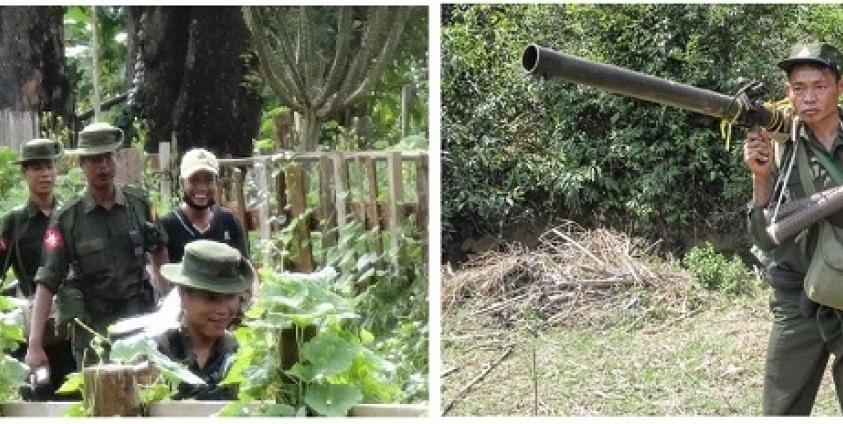Burmese government forces have clashed with the Shan State Progress Party/Shan State Army (SSPP/SSA) in Mong Hsu Township, central Shan State, allegedly while Burmese soldiers were clearing a poppy field.
According to a report in state-run newspaper Myanma Alin on January 23, the Burmese military accused the SSPP/SSA of attacking its troops with artillery fire while they were in the process of destroying a field of opium poppies in SSPP/SSA-controlled territory.
But a spokesperson for the SSPP/SSA, sometimes referred to as the Shan State Army-North, rejected the accusation, and responded by saying that the Burmese unit had opened fire on them first.
“The civilians [in this region] know very well who initiated the hostilities,” said Col. Sai Phong Han, the Shan army spokesman. “Troops from the Tatmadaw [Burmese armed forces] Light Infantry Battalion 379 attacked us. They say our soldiers ambushed them while they were destroying a poppy field in Mong Hsu Township. But the way they are telling it is simply to make themselves look good, and make us look bad.”
Clashes between the Tatmadaw and the SSPP/SSA have been reported regularly in the central Shan townships of Lashio, Namkham, Hsipaw, Kehsi, Kyaukmae, Tang Yang and Mong Hsu.
Mong Hsu is famed for its ruby mines.
On January 20, Shan Herald reported that the SSPP/SSA was ordered by the Burmese military to withdraw from its base in Mong Hsu, because the Tatmadaw planned to bring in reinforcements to help on a road construction project.
The SSPP/SSA is a member of the United Nationalities Federal Council (UNFC), an alliance of 12 ethnic armed groups that declined to sign the nationwide ceasefire agreement (NCA) with the Burmese government in October 2015. Around the same time, the Tatmadaw launched heavy offensives against the SSPP/SSA, including an assault on the rebels’ Wan Hai headquarters in Kehsi Township.
Khuensai Jaiyen, the managing director of the Pyidaungsu Institute for Peace and Dialogue, said that the Burmese military is creating conflict because it does not want the ethnic armed groups to agree to a ceasefire.
“The Tatmadaw is now initiating clashes because it does not want these ethnic armed groups to sign the NCA,” he said.
Since the signing of the ceasefire accord in October 2015, clashes have been reported in ethnic regions across the country, between the Tatmadaw and both NCA signatories and non-signatories.
The Burmese army has also been involved in hostilities against the Restoration Council of Shan State/ Shan State Army (RCSS/SSA), also known as the Shan State Army-South, despite the latter being one of the eight groups to sign the NCA.
On January 19, the Burmese army Battalion 429 attacked RCSS/SSA troops near Nongle village in southern Shan State’s Mong Pawn Township.
And on November 20 last year, hostilities broke out between Burma’s armed forces and the newly formed Northern Alliance, a coalition of four ethnic armed groups: the Arakan Army (AA), the Kachin Independence Army (KIA), the Myanmar National Democratic Alliance Army (MNDAA) and the Ta’ang National Liberation Army (TNLA). Fighting caused thousands of civilians to flee their homes and seek shelter elsewhere, many of whom have still not returned to their villages.
By Shan Herald Agency for News (SHAN)







